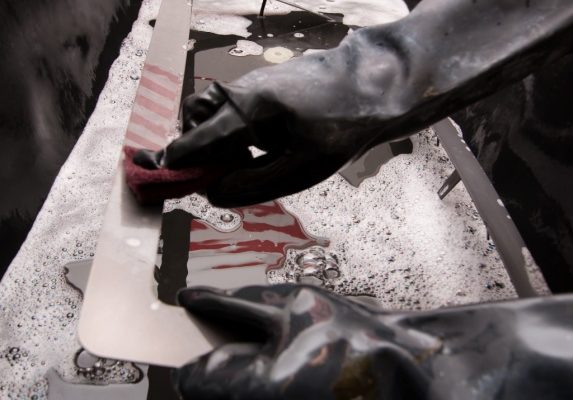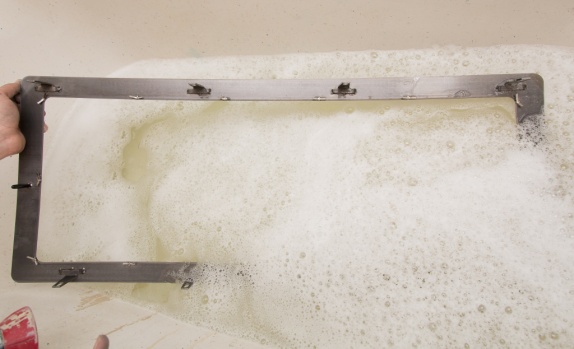Hydro dipping (n.): a method for transferring printed graphics to three-dimensional surfaces by suspending chemically-activated film in a vat of water and then dipping the substrate material into the water.
Make sense?
Of course it doesn’t.
Hydro dipping is a fairly complicated, multi-step process that requires visual aid to understand. Luckily, the good folks at T-REX were willing to show us how the process works when producing their new hydro dipped Graphic Series Grilles.
In the automotive realm, we’ve seen hydro dipping used on valve covers, air cleaners, intake manifolds, dashboard inserts, and more. It’s been around for a while, but since hydro dipping is a specialized process, these parts are often custom, one-off pieces.
T-REX is aiming to change that.
A leading manufacturer of truck grilles, T-REX offers its customers that custom, hydro dipped look right out of the box with its Graphic Series Grilles. This full line of grilles features hydro dipped frames available in four different camouflaged patterns.
“We strive to distance ourselves from the competition,” said Tom Ameduri, senior account manager for T-REX Products, Inc. “Graphic grilles were a natural progression after the release of our super popular Torch series. With the increasing popularity of camouflaged everything and Duck Dynasty’s continued staying power, we felt the industry would be ready for camouflage grilles.”
Because of the hydro dipping and finish process used by T-REX, Ameduri says the grilles can be washed, waxed, buffed, and polished just like the rest of the vehicle. Graphic Series Grilles are available for a wide variety of applications from the 2014 model year all the way back to the 1997 Ford Expedition.
So how does the process work?
Scroll through the slide show above for step-by-step images.
















Comments